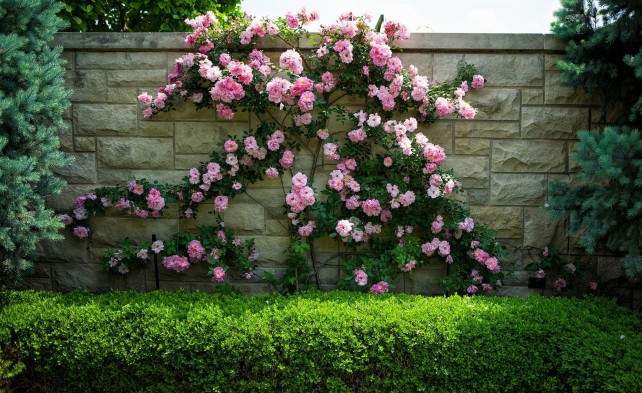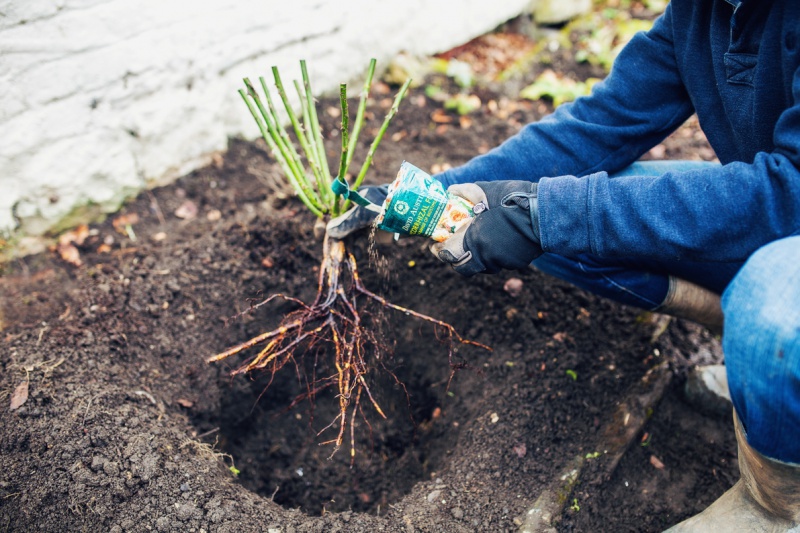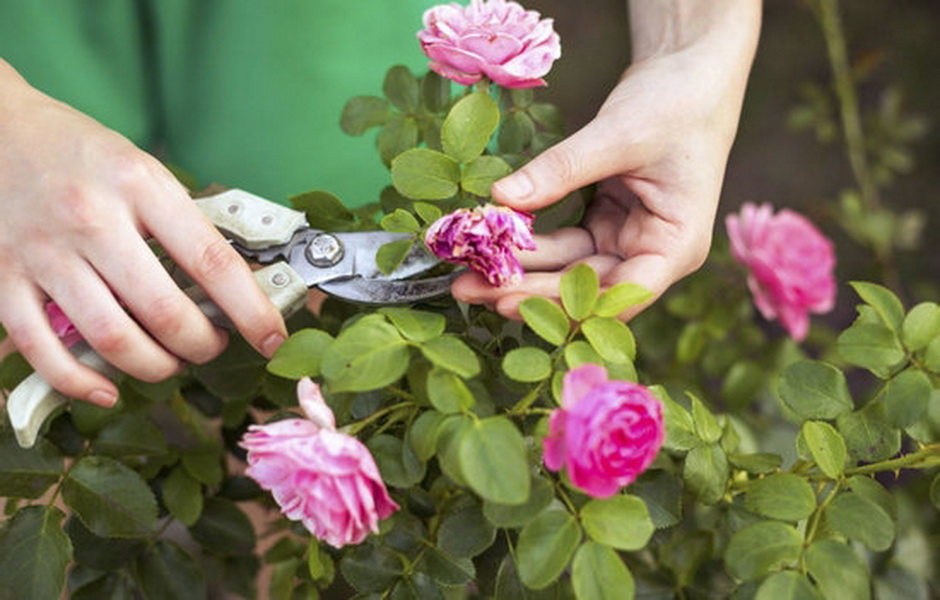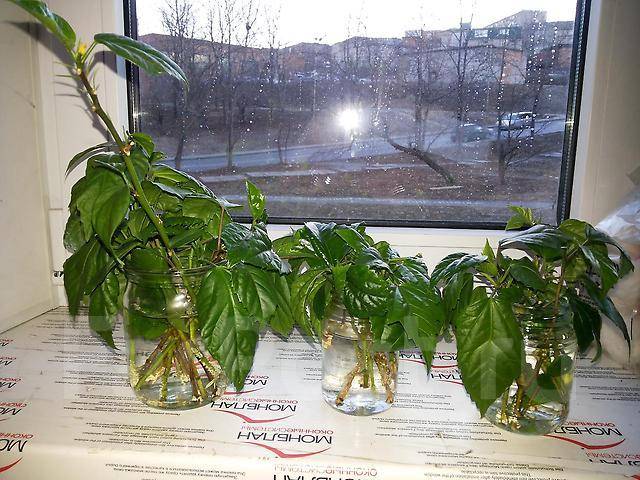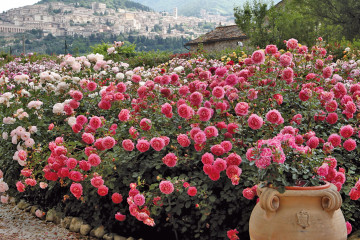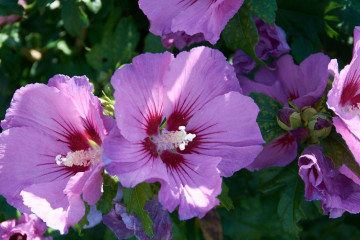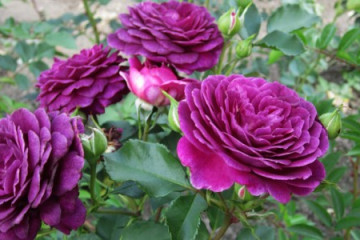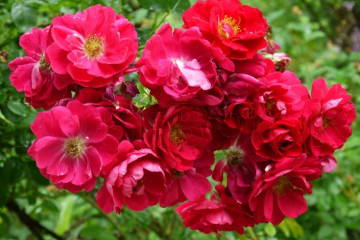Rosa Annie Duperey - growing and care
Content:
Many gardeners love planting and tending roses. These plants can be moody, but their flowering and appearance are worth it. Proper care makes it possible to grow a beautiful, fragrant and exquisite flower that will delight the eyes of passers-by for a long time. The graceful and luxurious rose of Annie Duprey feels great in the middle zone of the Russian Federation. This variety does not cause any trouble to the owner.
Rose Annie Duperey
In a separate genus of the Rosaceae family, there are approximately 350 species and 25,000 varieties. Roses have been pleasing people for many centuries in a row. Modern varieties of these flowers have excellent color, large buds and unpretentious care.
Rosa Annie Duprey is a young species that was bred in 2006. She became popular because of her bright colors and unpretentious nature. These flowers were bred by the French breeders of Meilland International. The rose was named after a popular writer and actress. The description of the flowers is always bright and rich due to the incredible appearance.
Rose Floribunda Annie Dupre
This rose belongs to scrubs, which includes the most decorative rose hips and other forms obtained from them. Specifications:
- the height of the spreading bush is 80-110 cm, the girth is about the same;
- rich green leaves with a glossy finish;
- dense, double yellow roses, gold / lemon tint;
- 3-5 brushes with buds from 8 to 9 cm in diameter;
- citrus aroma.
The rose of this species is liked by gardeners due to its weak fading in the sun, re-flowering, winter hardiness, and unpretentious care. With so many pluses, there is only one minus - poor resistance to rain. Therefore, it is better to use the shelter so that the buds bloom.
Landscaping can be supplemented with this rose. After all, these flowers are considered universal. They look great not only in a bouquet, but also in the garden. Such shrubs can be used to decorate personal plots, garden and park areas in the form of single plantings or mixed groups.
Growing a flower: how to plant it in open ground
This rose variety must be propagated using cuttings in order to preserve the varietal high qualities of the plant.
At this time, the earth should be warmed up above 10 degrees Celsius.
For the landing site, you must choose a place with partial shade. In direct sunlight, the duration of flowering decreases and burns are possible. It is also better not to use swampy and lowland areas. For the reason that the flower will hurt and grow worse.
Rose Anny Duperey loves fertile and breathable soil.
The soil must be cultivated with organic fertilizers. Sandy soil does not hold moisture and gets very hot. It is supplemented with humus and a small amount of clay. When the soil is ready, you need to work with the flower for planting. The roots of the cuttings must be carefully spread out and checked to ensure that they are all in good condition. It is advisable to remove rotten roots.
For planting, you must follow some rules, the future growth of the plant depends on them:
- Step 1. In the selected area, you need to make square holes. Their size should be 0.5 m by 0.5 m, and the optimal depth is 50-60 cm;
- Step 2. The prepared hole must be filled 1/3 with soil and watered with a fertilizer solution;
- Step 3.Place the seedling in the middle of the hole, straighten the roots, sprinkle with soil and tamp it a little;
- Step 4. Around the stem, the soil must be sprinkled with sawdust and watered with clean water.
Plant care
Rose scrub Annie Duprey needs infrequent watering. These procedures should be carried out once a week in hot and dry climates, once every 10 days in moderately humid climates. Watering should take place early in the morning or late in the evening when the sun has gone down. It is not necessary to water these shrubs often and little by little, this can lead to wilting of the plant.
Top dressing should be based on special preparations with potassium, phosphorus, calcium. The quality of the soil affects the growth and flowering of the shrub. This variety of roses grows well in fertile, breathable soil. Light and deep soil provides the root system with the right amount of moisture and air. For planting in heavy, clayey soils, additional work is required. They are carried out using humus, compost, sand and peat. For too light clay soils, humus, peat-manure compost are used.
Many types of rose scrubs need to be pruned regularly to rejuvenate the shrubs. The most optimal is the autumn pruning, which takes place at the stage of preparation for wintering. Unripe, young, diseased branches and buds are removed, thereby reducing the risk of rotting.
Young and strong shrubs are used for transplantation. This process can be traumatic for the plant, so only quality plants will survive. The transplant must be done in the spring or early fall.
In winter, the rose should be covered. In persistent cold weather, the gardener should put spruce branches next to the shrub. The branches are bent to the ground, sprinkled with sawdust on top and hermetically covered with non-woven material.
Covering a rose too early can lead to moisture retention on the stems, which threatens to rot. There should be enough space between the branches to prevent the spread of bacteria.
Rose Annie Dupre: bloom
The most important advantage of this rose is its early flowering. If you take proper care of Annie Duprey, then the shrub pleases the owner with the first buds after April. The period of activity continues until frost. Abundant flowering of the plant can be several times. There is a winter period for rest, when the bush is covered for wintering.
It is necessary to take care of these flowers both during and after flowering. The gardener must regularly loosen the soil, remove weeds, and carry out disease prevention. It is especially necessary to treat watering with great care during the hot period.
Until the end of summer, the buds must be removed, and in the fall, leave a few flowers on the shoot. This will allow the buds to ripen better, winter well and get abundant flowering the next year.
If the rose does not bloom, there may be several reasons for this:
- bad soil;
- improper watering;
- wrong shelter for the bush for the winter;
- poor landing site;
- unsuitable climate.
For good flowering of this plant, it is necessary to regularly fertilize the ground, adhere to the correct watering scheme, and carefully select a place for planting. Competent care and shelter for the winter also affects the flowering of the rose.
Flower propagation
In early spring, after the opening of the shrub, new, young shoots begin to grow. After a month, gardeners can already prepare breeding material. Make sure the plant is completely healthy.
For planting, you need to prepare the material. It is taken from the middle part of the shoot, which is lignified, but still in the growth stage. It could be a stem. The stalk must be treated with a special rooting stimulator and placed in a nutrient substrate for the rooting process.
Diseases, pests and ways to control them
The correct selection of a site for planting can protect the rose from diseases and pests. Low-lying places where the cold air flow stagnates and the plant is negatively affected is not suitable. These roses practically do not get sick, but there are exceptions. Most often, plants suffer from improper care. Rose owners may face such flower diseases:
- powdery mildew;
- rust;
- bark necrosis and others.
In each individual case, it is necessary to carry out control measures that will make it possible to cure the plant. This can be the breakage of affected leaves, processing with special means and digging up the soil.
Floribunda Annie Duprei rose is an excellent variety for decorating your home garden. She is not whimsical to care for, does not require special conditions and constantly pleases the owners with beautiful buds and greenery. It can be used both in a single planting and in a group. The plant blooms profusely all summer, practically does not get sick and multiplies easily. The main thing is to have desire, and then your rose will bloom and smell.
